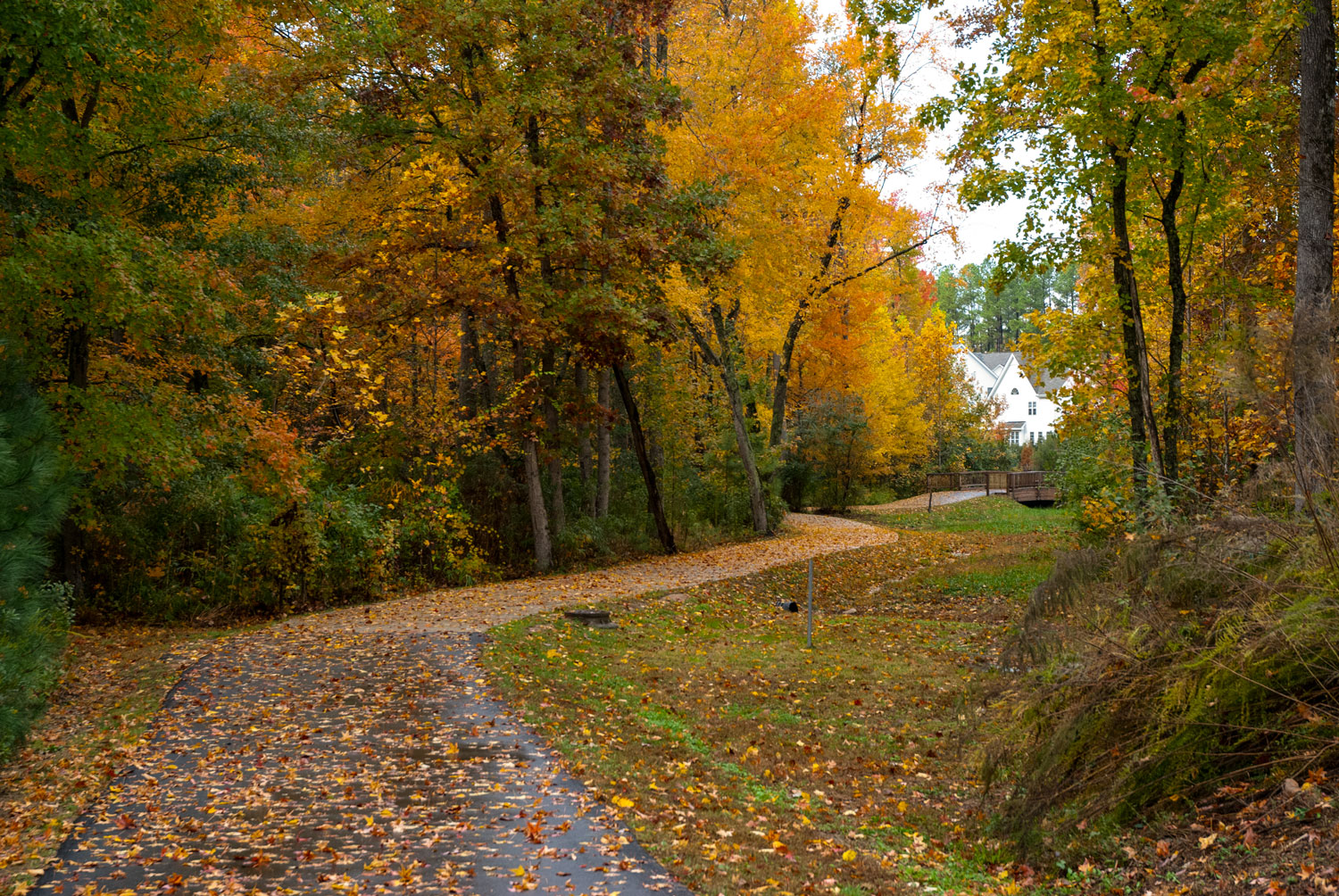Nature Trails
In 2007, photographer Forrest Anderson experienced a serious illness. During his recovery, he grabbed a camera and walked for an hour on a nearby nature trail every day. This habit continued after he was well and eventually developed into an extensive photo essay in which for six years he chronicled the trail’s crucial physical, social and environmental impact on the community in which we lived - Apex, North Carolina. The photographs accompanying this blog are from that photo essay.
—
The impact of urban nature trails on the well-being of communities and their residents has been thrown into sharp relief this year as other outlets for physical and recreational activities have been closed or sharply curtailed.
However, long before the epidemic, urban trails had come to be seen as an essential part of healthy cities. More than half of the world’s population live in cities, and that ratio is rapidly increasing. These wide paved public trails, which are part of a vision of “cities within gardens”, are separate from street traffic and connect with sidewalk and bicycle networks. They link neighborhoods, green spaces and community resources and provide a relatively safe way to walk and bike, travel in a wheelchair, push children in strollers, roller skate or skateboard without the danger of motor vehicle accidents.

A leaf on a nature trail, imprinted with the tread from a trail users' sneaker. Urban trails are a space for people and nature to come together and share resources.
I first became acquainted with urban nature trails while living in Beijing, China. A former imperial capital, this large city has many large parks that once were the private domains of China’s emperors but have been opened to the public. Almost the city’s entire population lived in high-rise apartments, but come Saturday, we headed for these beautiful parks which had gardens and trails winding through them. Despite living in one of the world’s largest cities, we never felt deprived of opportunities to experience nature.
Trails are as old as mankind, but the movement toward designing urban trails took off in the late 1800s with Frederick Law Olmsted, the “father” of the greenway movement who created the famous design of Boston’s Emerald Necklace. Charles Eliot, Olmsted’s apprentice, continued to work on Olmsted’s vision to create a network of parks and greenways around the Boston Metropolitan Region. In the early 1900s, Olmsted’s sons and others expanded Olmsted’s vision in producing the 40-Mile Loop in Portland, Oregon. During the environmentally active 1960s and 1970s, landscape planners developed the modern nature trail and green space ecosystem.
The President’s Commission on Americans Outdoors established in 1987 and Charles Little’s 1990 book, Greenways for America, influenced and named the modern greenway movement. Americans Outdoors articulated a vision of a national network of greenways to provide people access to open spaces close to where they live, and to link together rural and urban trails “threading their way through cities and countrysides like a giant circulatory system.” The movement caught on and has transformed urban environments across the nation.
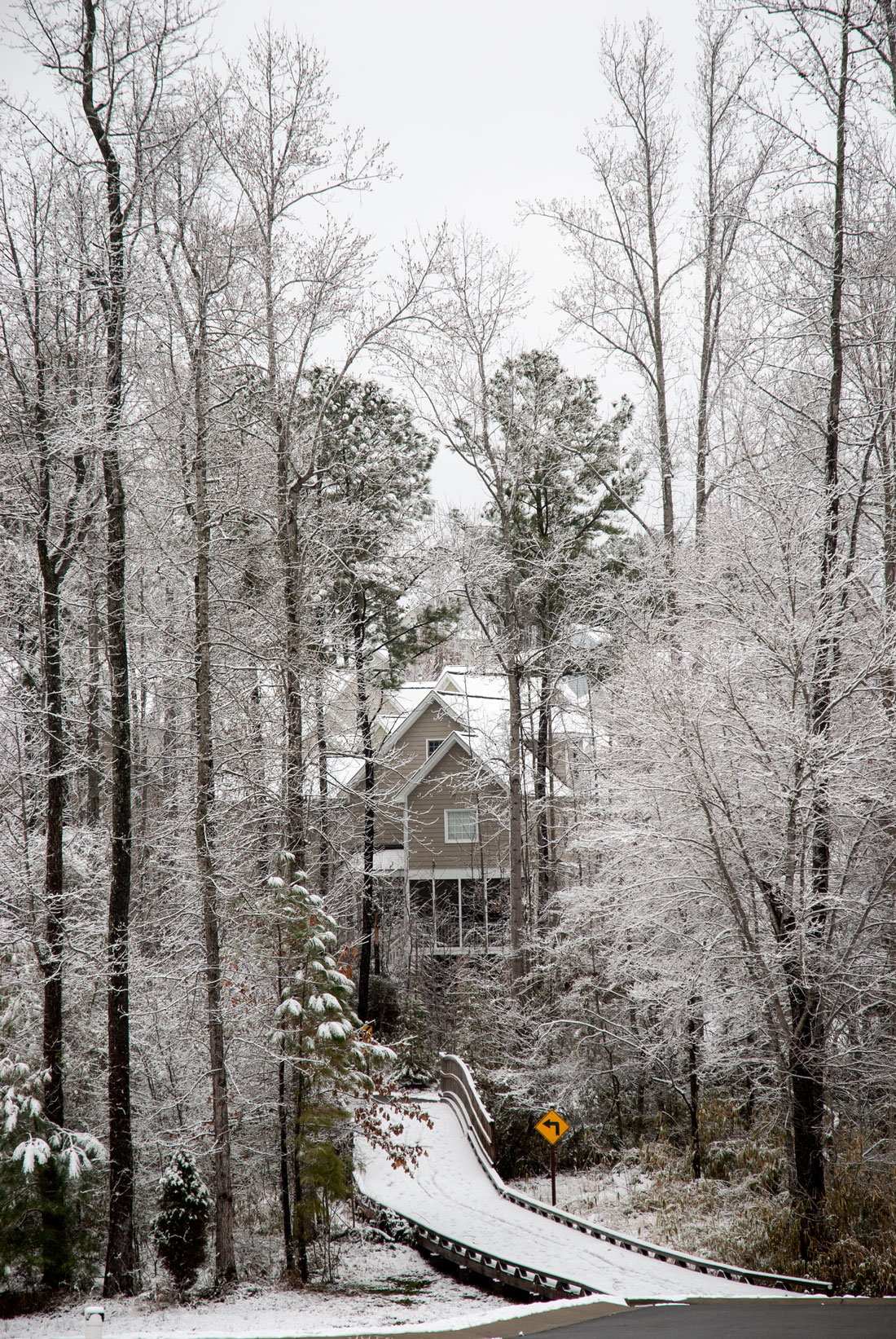
A nature trail in winter.
The greenway movement is far from limited to the United States. From Singapore to Rio de Janeiro, major parks and nature areas have been tied together with trails so that people can walk from one nature area to another. The six-mile Giraffe Path in Manhattan connects seven parks in northern Manhattan.
Today, many individuals and organizations work together to make the greenway vision a reality in their communities worldwide. The Rails-to-Trails Conservancy has converted more than 21,000 miles of rail corridors into trails in the United States and more than 750 U.S. communities have been transformed with urban trail systems.
National, state, local, and non-governmental agencies, including the National Park Service, are involved in creating such connected greenways. They have worked together with urban sustainability initiatives to create interconnected networks of natural areas and other open spaces that conserve natural ecosystems, sustain clean air and water and provide both wildlife and people with natural environments in cities. One initiative, New Urbanism, is focused on creating or rejuvenating walkable, mixed-use towns, villages and neighborhoods with integrated open-space systems. Some players are trying to protect open spaces from overdevelopment while an initiative called Smart Growth is trying to direct wise development.
Many nature trail initiatives are models for good governance in communities, as people from various political parties with different priorities from environmentalism to economic development have come together to create trail solutions that work for thousands of people and bring money into economies.
The best of these urban trail systems connect important sites and destinations and allow for both short walks and long treks. They link up not only with neighborhoods but with attractive business districts that have trees and areas where people can walk safely. They allow residents to experience nature and exercise close to where they live and work. Most trails are for biking and walking, but Anchorage, Alaska, has not just 120 miles of paved trails but also ski and dog mushing trails. The Bay Area Ridge Trail is a 350-mile trail that circles the San Francisco Bay.
Many communities publish urban trail maps on-line, in print form and in phone apps. These apps enable people to find out about group walks, runs and other activities on trails.
Many urban trails give people access to places that are difficult to see otherwise, such as Mt. Sutra, a prominent landmark in San Francisco. Some urban trails connect with nearby forests, allowing people to bike or hike to trails outside cities. The Trilha TransCarioca, a trails network in Rio de Janeiro, is intended to enable residents to travel from shore to mountaintop, connecting major parks and ecosystems including Tijuca National Park. The Waterfront Trail in Canada extends almost a thousand miles along Lake Ontario and Lake Erie, through downtown Toronto and through some 80 communities, including Rouge National Urban Park.
Some of the best trails follow waterways that offer natural vistas, and coastal cities such as Boston and San Francisco have trails near harbors. People can navigate some of these waterways in kayaks or canoes. New York City has a network of such water trails that connect its five boroughs. Wellington, New Zealand, has a snorkel trail that is part of the Taputeranga Marine Reserve. There are experiments with kayak-share and canoe-share systems. The result is a blurring of rural and urban environments that is enabling people to get the economic benefits associated with urban environments while enjoying recreational activities traditionally associated with rural areas.
Nature trails aren't just public open spaces. Private yards on the periphery of trails help foster the feeling of walking through a large garden.

With attractive fences that delineate private land while still allowing people an open view of nature, private yards become part of a shared nature corridor.
In Europe, urban trails often are built on remains of ancient footpaths or medieval street networks. Lanes adjacent to private gardens in older American cities such as Charleston, South Carolina, are part of urban trails. In some hilly areas, trails incorporate long stairways up hills. Other urban trails include overpasses. Some trails originally were tow paths along the banks of waterways to allow horses or teams of human pullers to tow boats. France has many paved paths along canals, many of which originally were tow paths and which provide picturesque views of villages.
Trails can be any length and can be linear or looped. The September 11th National Memorial Trail, a 1,300-mile triangular loop that connects the three 9/11 memorial sites, is a long-distance path open to cyclists, runners, walkers and equestrians. The most famous American long trails are the Appalachian National Scenic Trail and the Pacific Crest Trail. They are part of the National Trails System which includes National Scenic Trails, Bational Historic Trails and National Recreation Trails.
Nature trails have many benefits:
Health
At least two and a half hours of moderate physical activity per week has been found to reduce the risk of premature death, heart disease, hypertension, colon cancer, diabetes and other health problems, but only half of adults and less than a third of children get this level of exercise. Trails are among the best settings for physical activities because they are close to home, low cost and people are likely to be physically active along them. Many people also frequent parks, but two-thirds are not physically active there.
Urban trails make walking and bicycling practical, enjoyable and safe. They are convenient and enable people to integrate physical activity into their daily routine. Contact with green spaces also has been shown to reduce stress, increase people’s ability to focus and improve their mood and sense of pleasure.

Bicycler with his dogs.
Walking or bicyling on a nature trail has been shown to provide people with important down time to think and sort out problems.
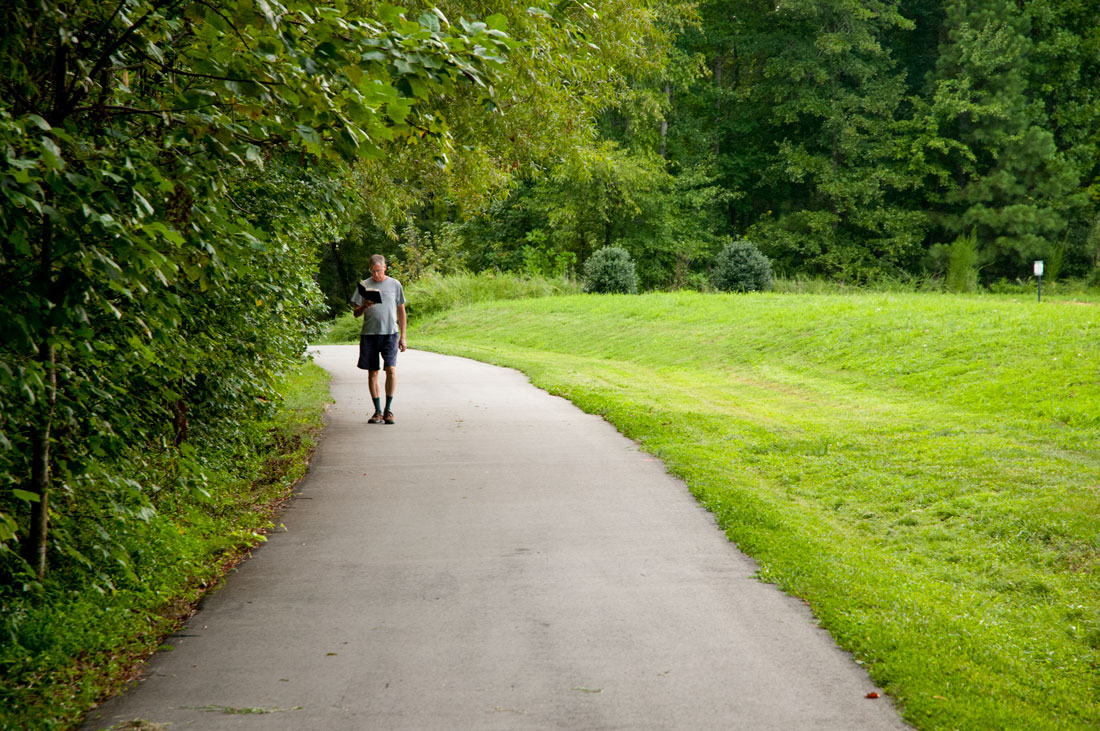
A man walking and reading a book.
A Los Angeles study found that children who live a walkable distance from green spaces were much less likely to be obese, even if those were small areas.
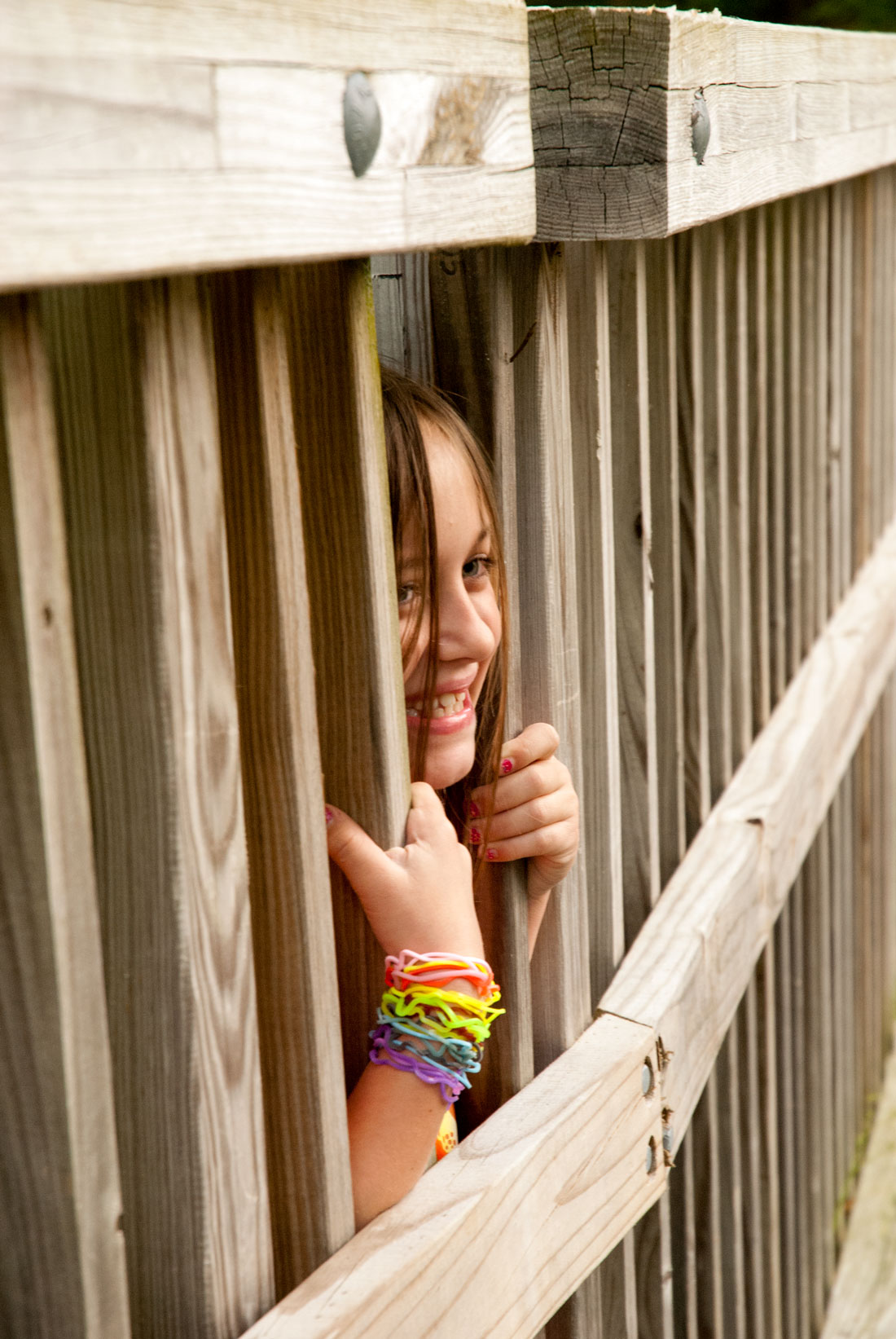
A girl on a nature trail bridge.
Urban vegetation in green spaces removes from the air pollution from vehicles that is linked to increased respiratory problems such as asthma and chronic bronchitis. These illnesses have major economic impacts in hospital visits and absenteeism from work and school. A 2013 study in New York City indicated that trees saved an estimated $60.1 million in health care costs. Vegetation in open areas also provides shade and cools the air. Some cities have set a target that 40 percent of their land be shaded by trees to alleviate the common urban problem of an increase in ambient temperatures caused by impermeable materials in buildings, roads and other infrastructures that trap heat. This creates urban heat islands that raise summer energy demands, air conditioning costs, air pollution from greenhouse gas emissions and the incidence of heat-related illnesses and deaths.
Almost half of all trips taken in the United States are shorter than three miles, so if most of those can be made on foot or on a bicycle, they can substantially cut down pollution caused by vehicles. Trails significantly increase the numbers of people who use bicycles for transportation.
Social benefits
Trails facilitate social interaction that increases community cohesiveness. Many of my friends in Apex, North Carolina, were people I met while walking on our local nature trail. They were from a variety of ethnic and religious backgrounds.
It is easy and inexpensive for communities to organize trail-based activities such as 5K runs and chalk parties. Wellington, New Zealand, runs a photo hashtag called #PeakBragging. Prizes are awarded for the best photos and interactive maps are available of the spaces and trails around peaks. Many other communities have similar websites or apps with maps of trails and information about community activities on them.
Nature trails have been found to lower crime rates and violence in communities near or adjacent to them.
Because they are a shared space, they foster sharing and interaction as people participate in activities available on the trails.
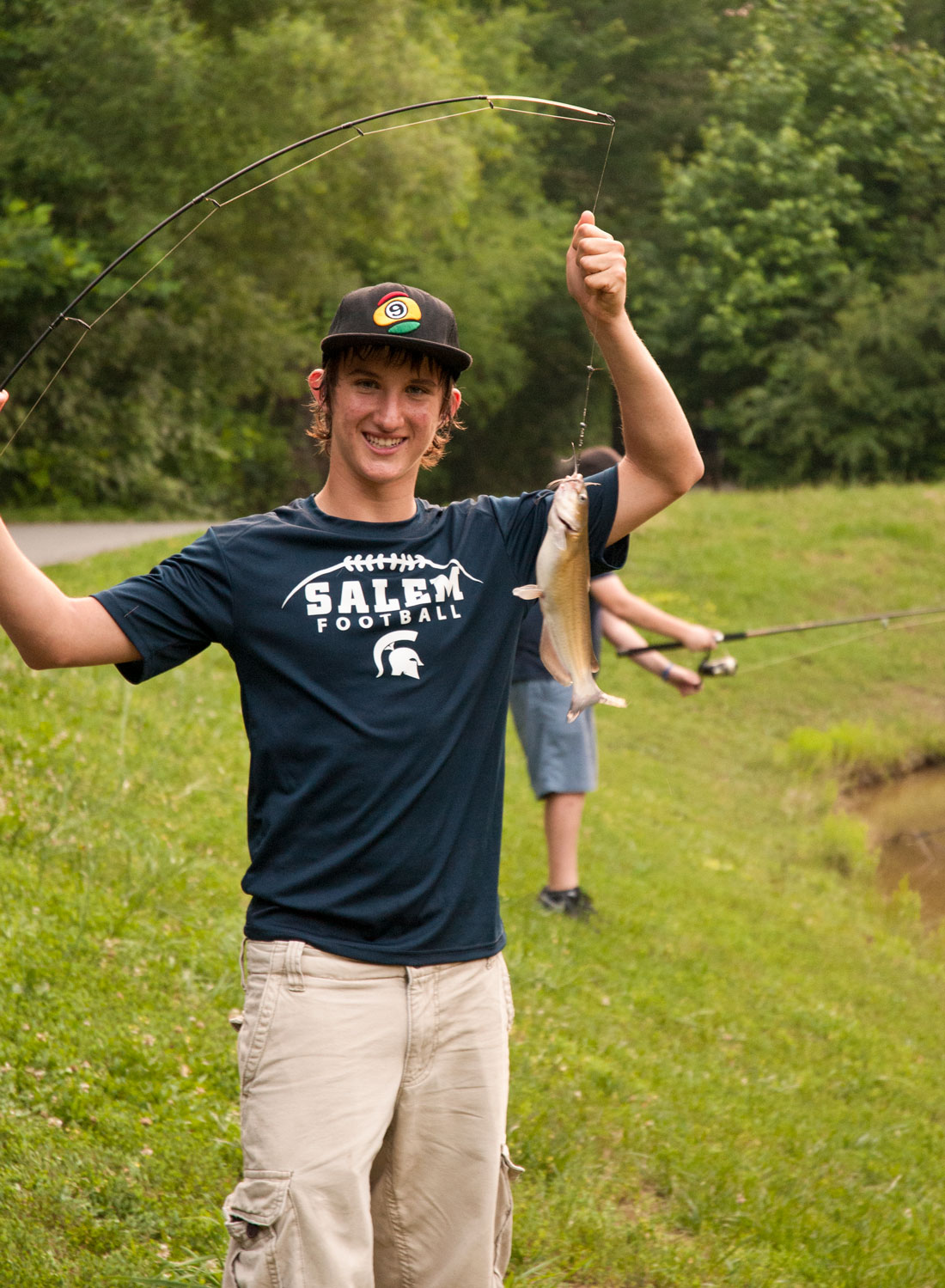
The city of Apex seeded the retaining pond next to the nature trail with fish which provided endless recreation for local fishing enthusiasts.
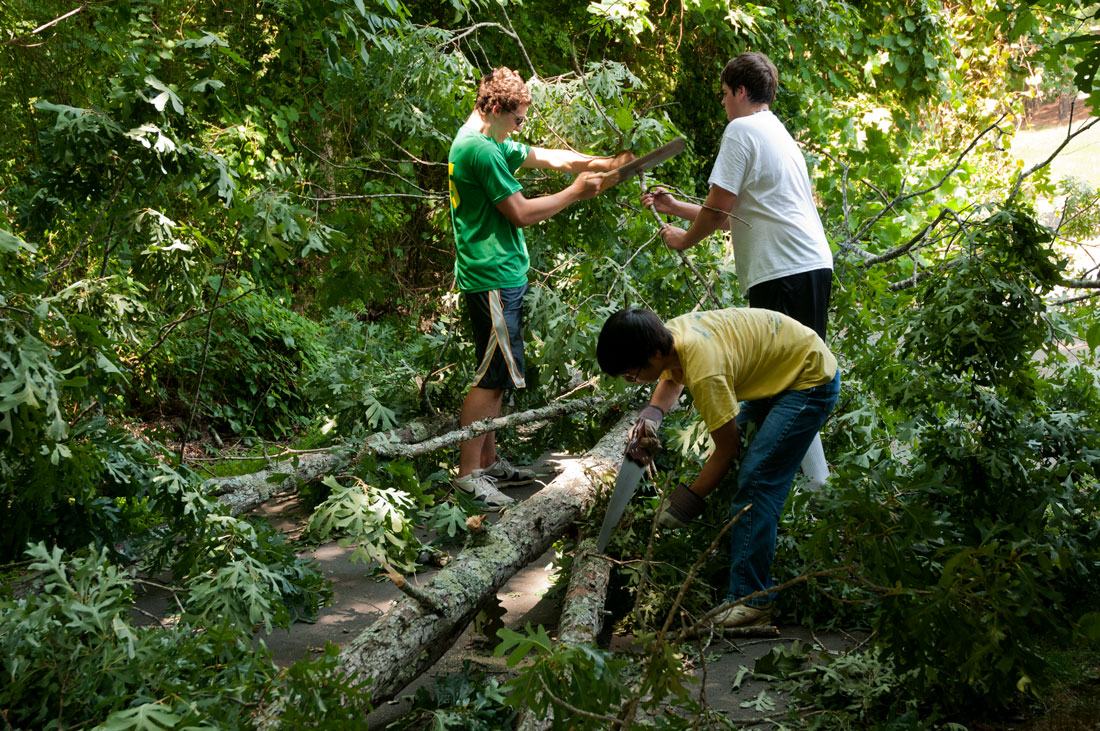
Boy scouts cleaning up branches from a fallen tree on the trail after a storm.
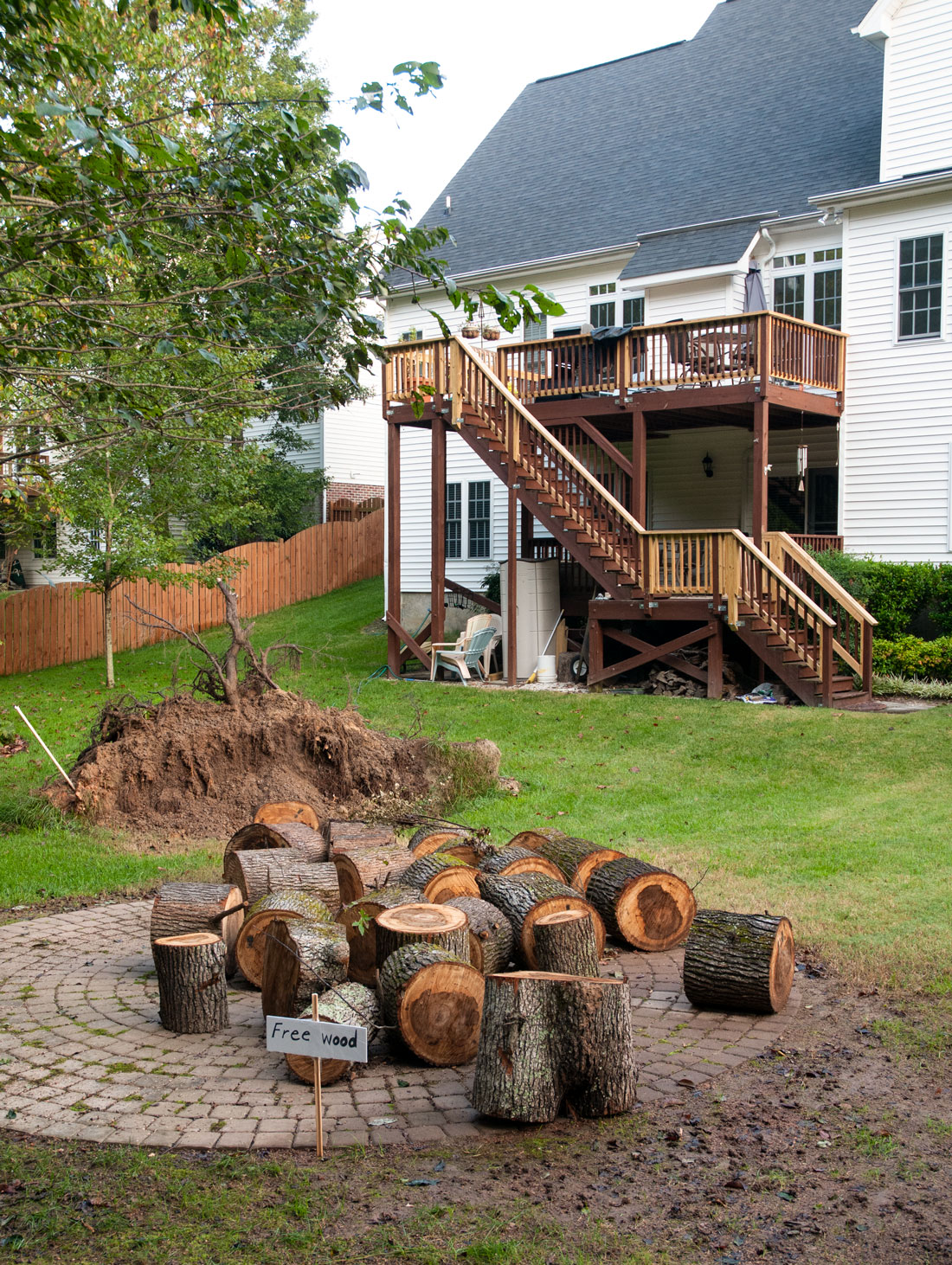
Free wood from a tree that fell during the storm in a yard adjacent to the nature trail.
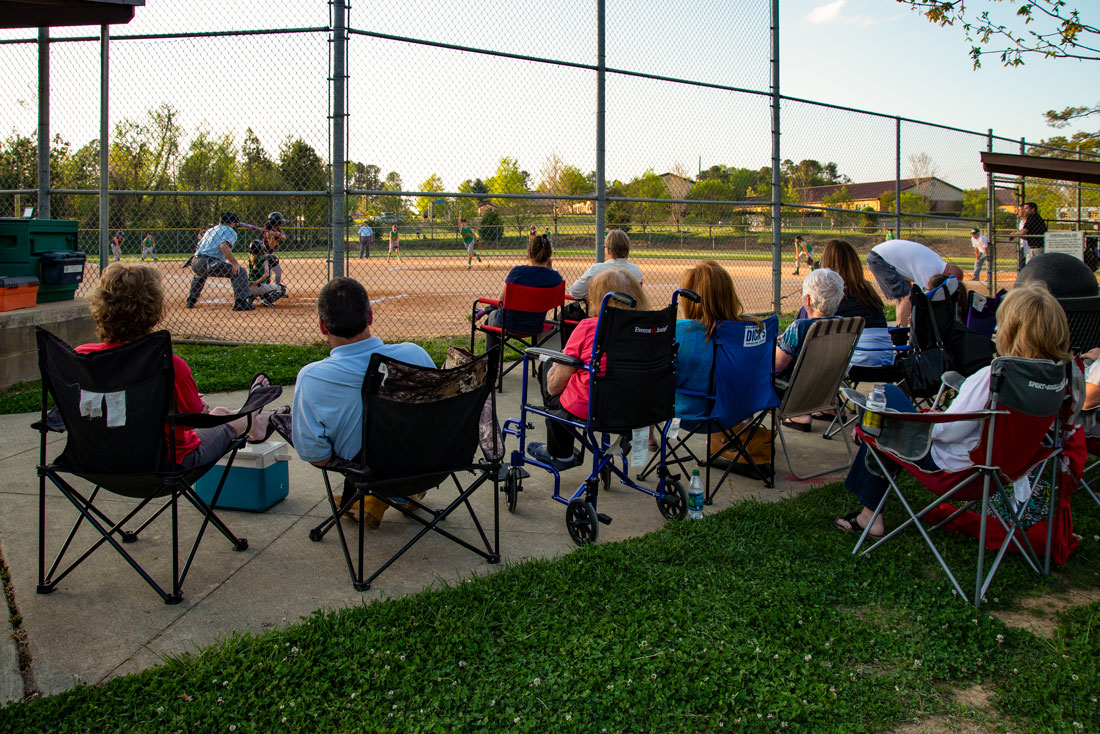
A baseball game at a school field that connects to the nature trail. Children from nearby neighborhoods walk on the nature trail to and from school and families use it to walk to baseball games at the field. The nature trail's proximity to a school enables it to be a natural laboratory for teaching biology, botany and science to students in a real natural environment. School athletes run along the trail as part of their training. The trail is a valuable asset for both the school and another private school in the neighborhood.
Environmental benefits
Urban trails are helping other species to live safely alongside humans in urban environments. Some trails follow or cross streams that provide water habitats for fish, birds and other animals. Some cities have built wildlife bridges and passageways along their green spaces to enable wildlife to travel between connected green spaces. Some nature trails are important bird habitats.
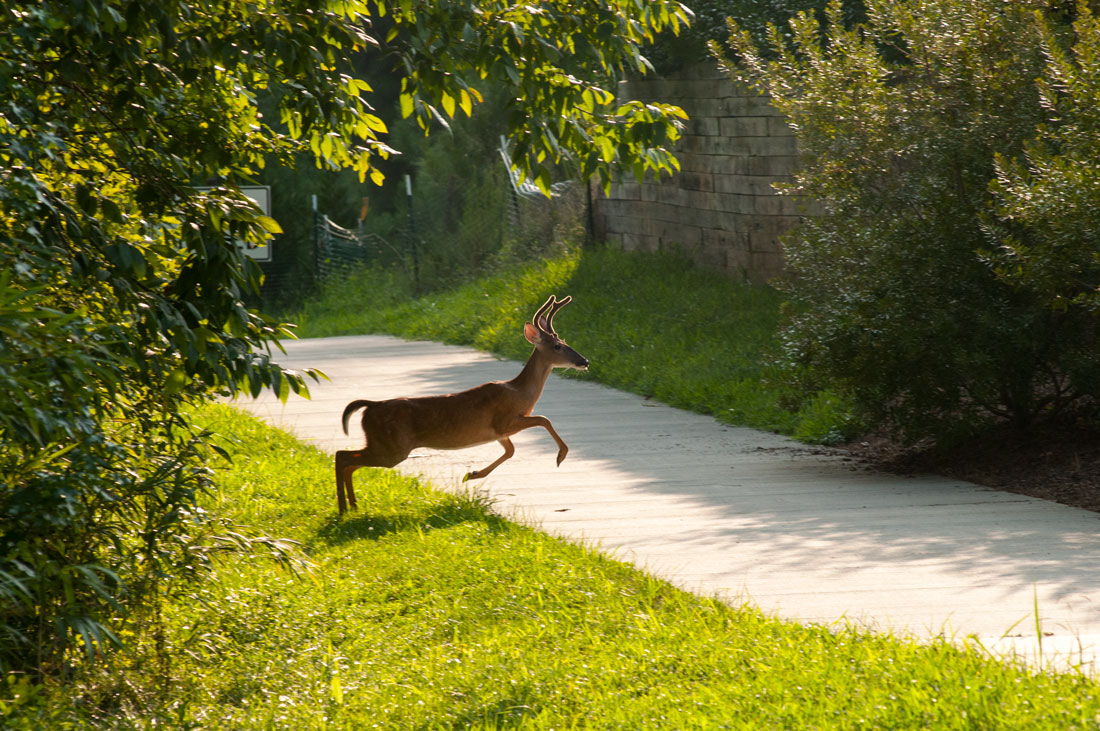
A herd of deer on the nature trail in Apex, North Carolina, became so tame that deer would sometimes venture quite close to humans. Roaming through the trees and in yards along the corridor, the deer were safe from hunters.
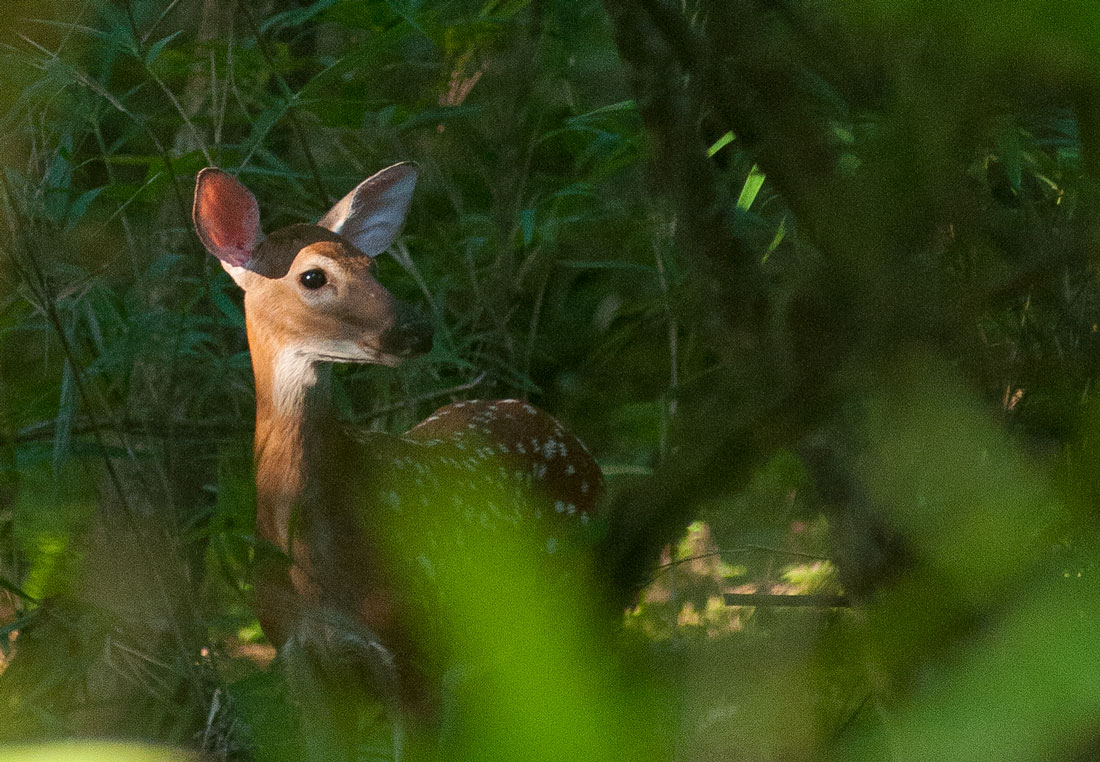
A fawn near the trail. The trail was a habitat for not just deer, but owls, blue herons, squirrels, rabbits, large patterned turtles, colorful butterflies and a wide variety of other animal and plant life.
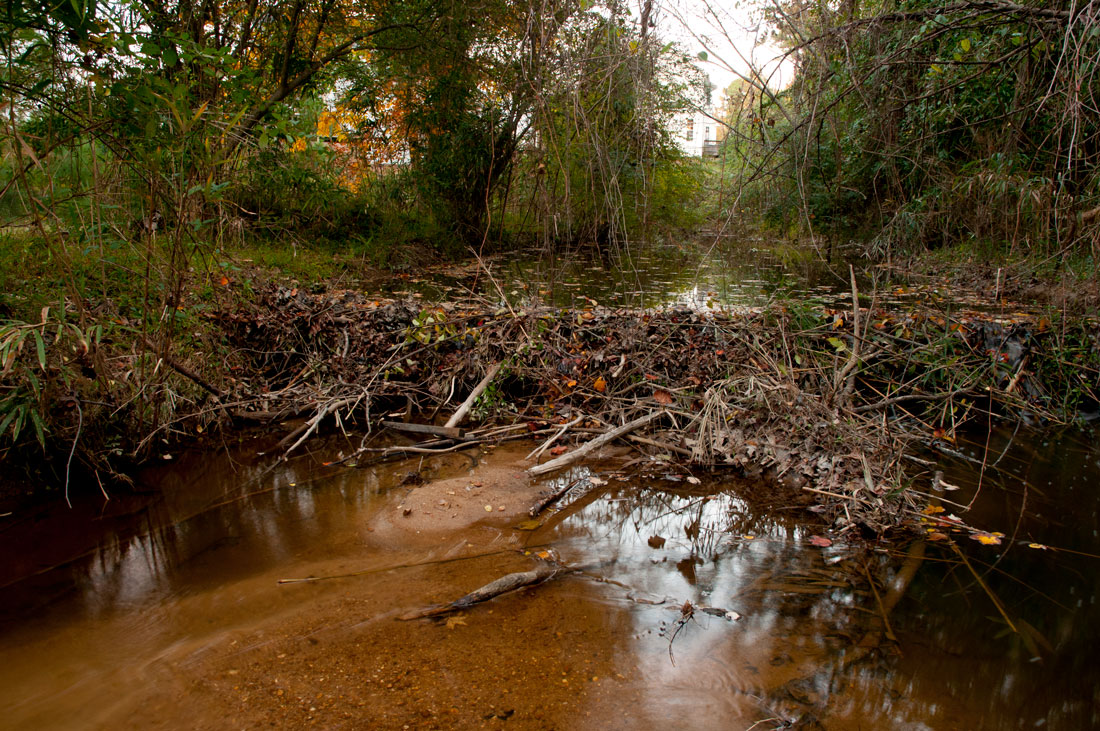
Not all of the animal life co-existed entirely peacefully with the people who used the trail. Beavers built dams across the adjacent stream that occasionally caused major floods across the trail. Local wildlife officials would trap them and take them to more rural areas, but they would return and resume building dams. Evidence of their sharp teeth gnawing on trees could be seen along the trail.

Regulars on the trail would warn each other of poisonous copperhead snake sightings. In at least one case, a local resident was bitten by one and became ill.
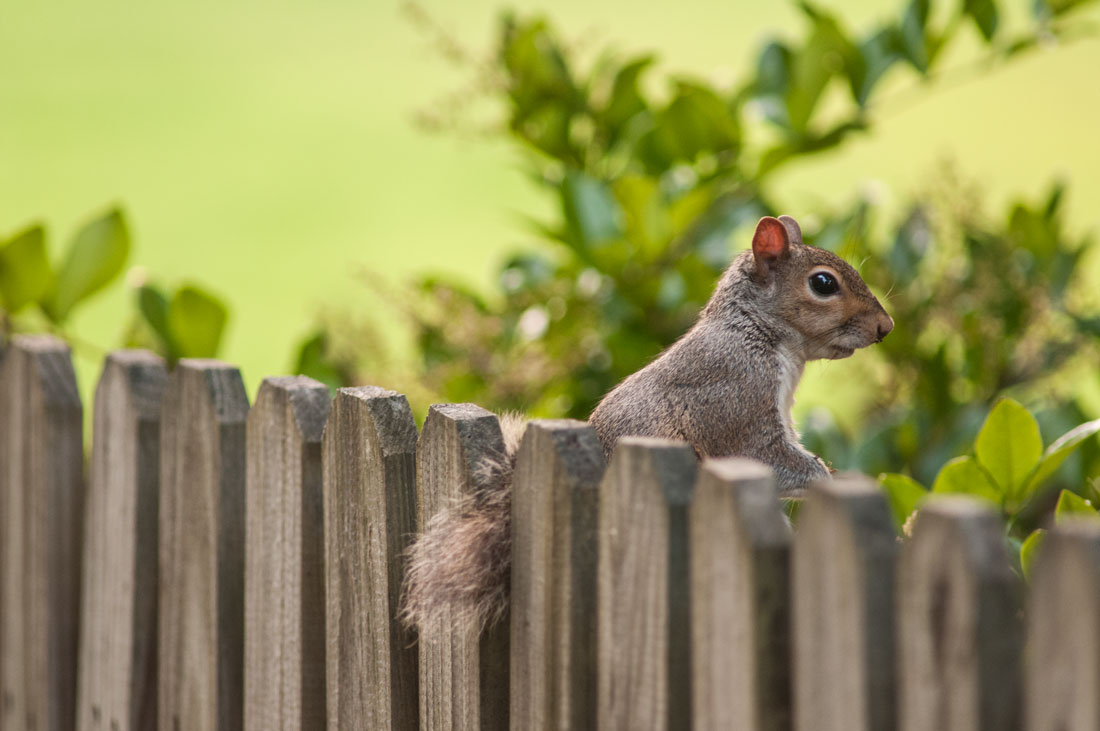
A squirrel on a fence next to the trail.
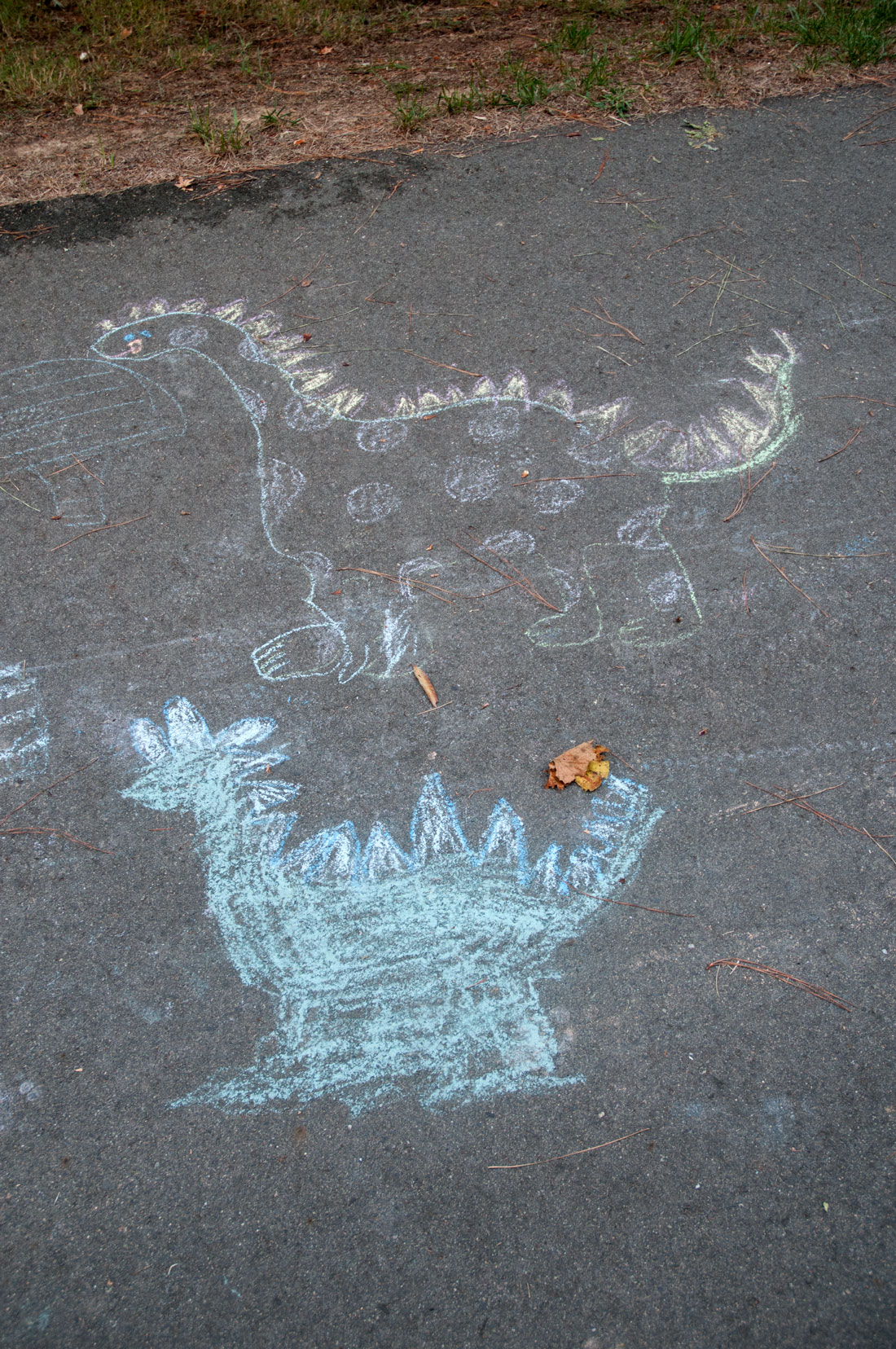
Some wildlife encountered on the trail, such as these dinosaurs, are fortunately extinct.
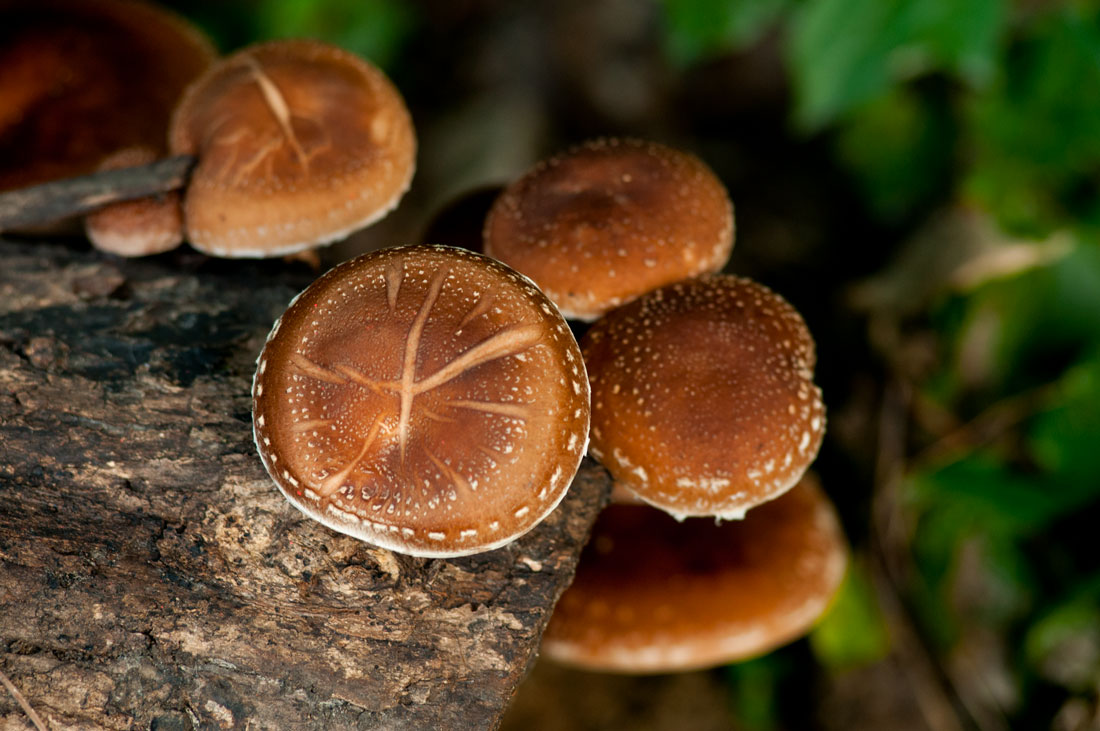
Mushrooms, looking like pancakes stitched around the edges, cling to a log next to the trail.
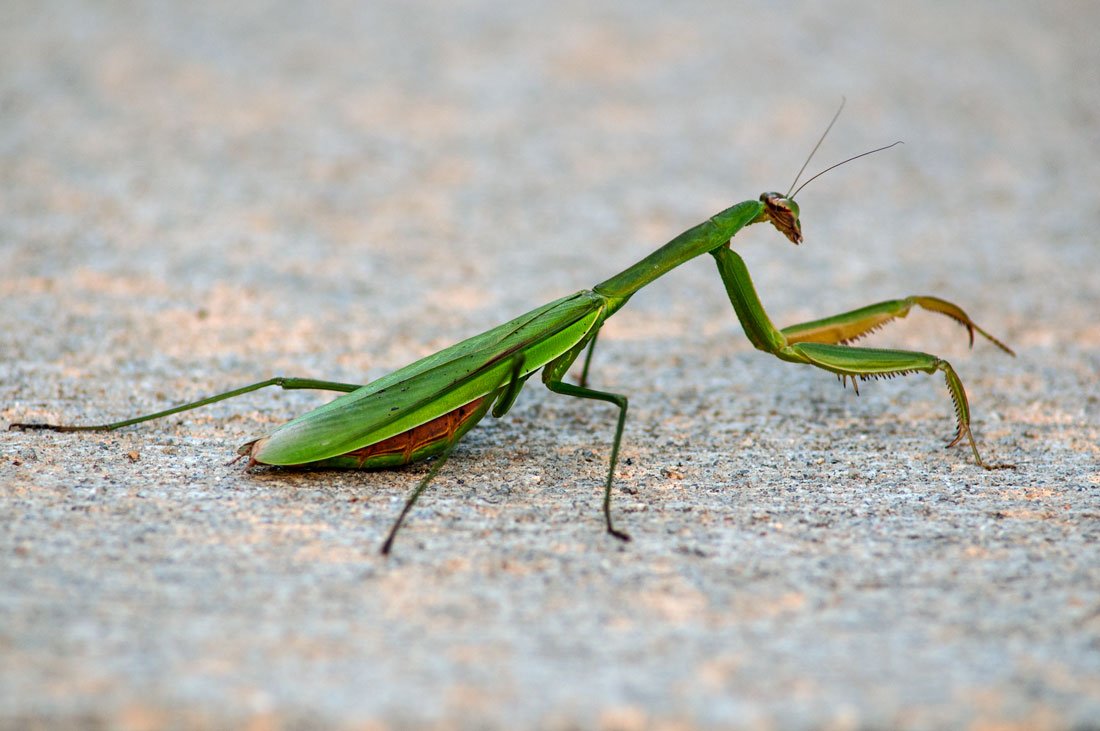
A praying mantis on the trail. Many colorful insects, including butterflies, spiders who build large glistening webs and shiny ebony beetles and long centipeds that looked like tiny commuter trains lived along the trail and sometimes ambled down it alongside humans.
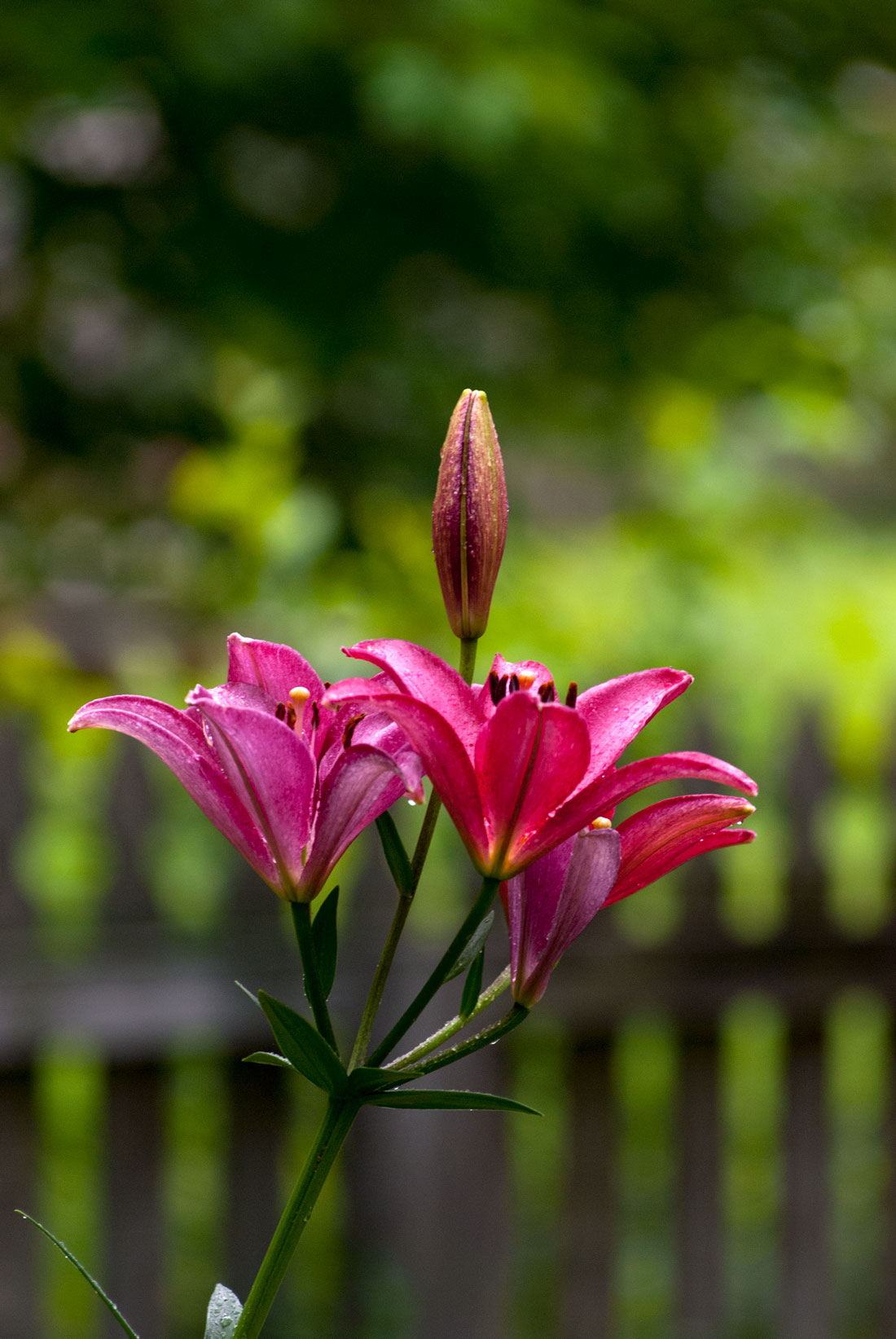
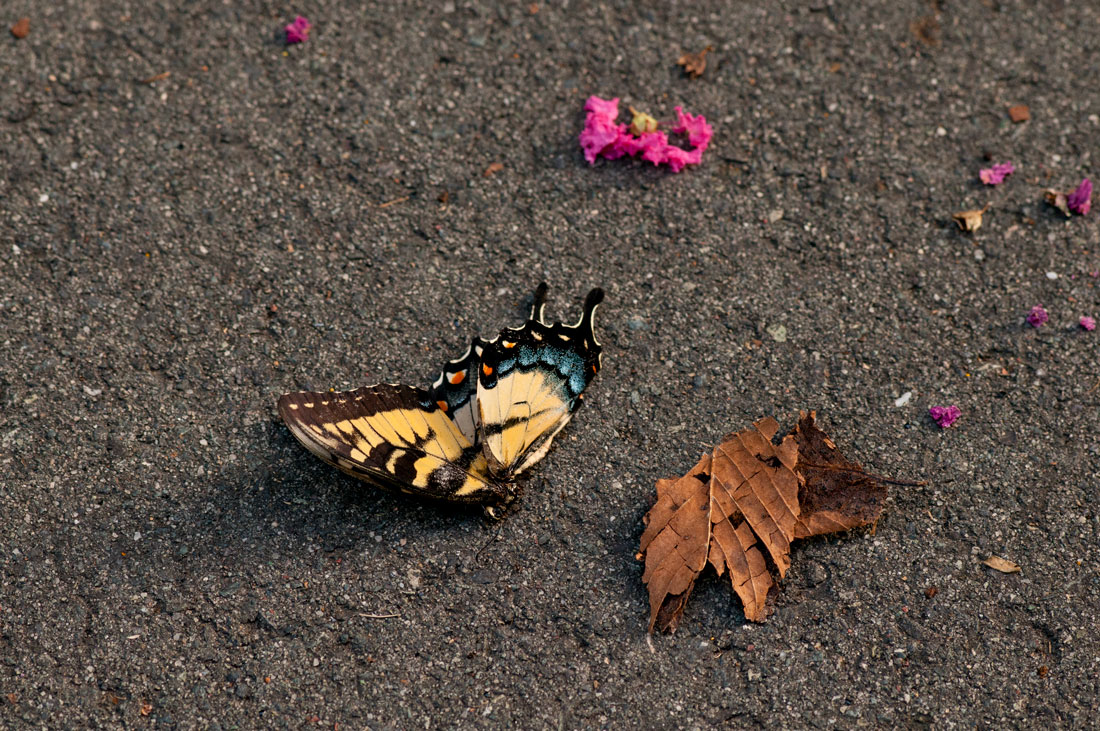
The death of a blossom, a butterfly and a leaf on the nature trail. Urban trails help urbanites learn important lessons from nature.
Open spaces – wetlands, vegetated stream buffers and natural floodplains – play a crucial role in filtering urban stormwater runoff, reducing the amount of pollutants entering streams and controlling damaging floodwaters. As land is developed, natural vegetation is replaced by impervious surfaces – streets, rooftops, building foundations and parking lots. These surfaces impede infiltration of water into soil, leading to more stormwater flowing at faster speeds toward streams. This can lead to damaging flooding, erosion of stream banks and water pollution.
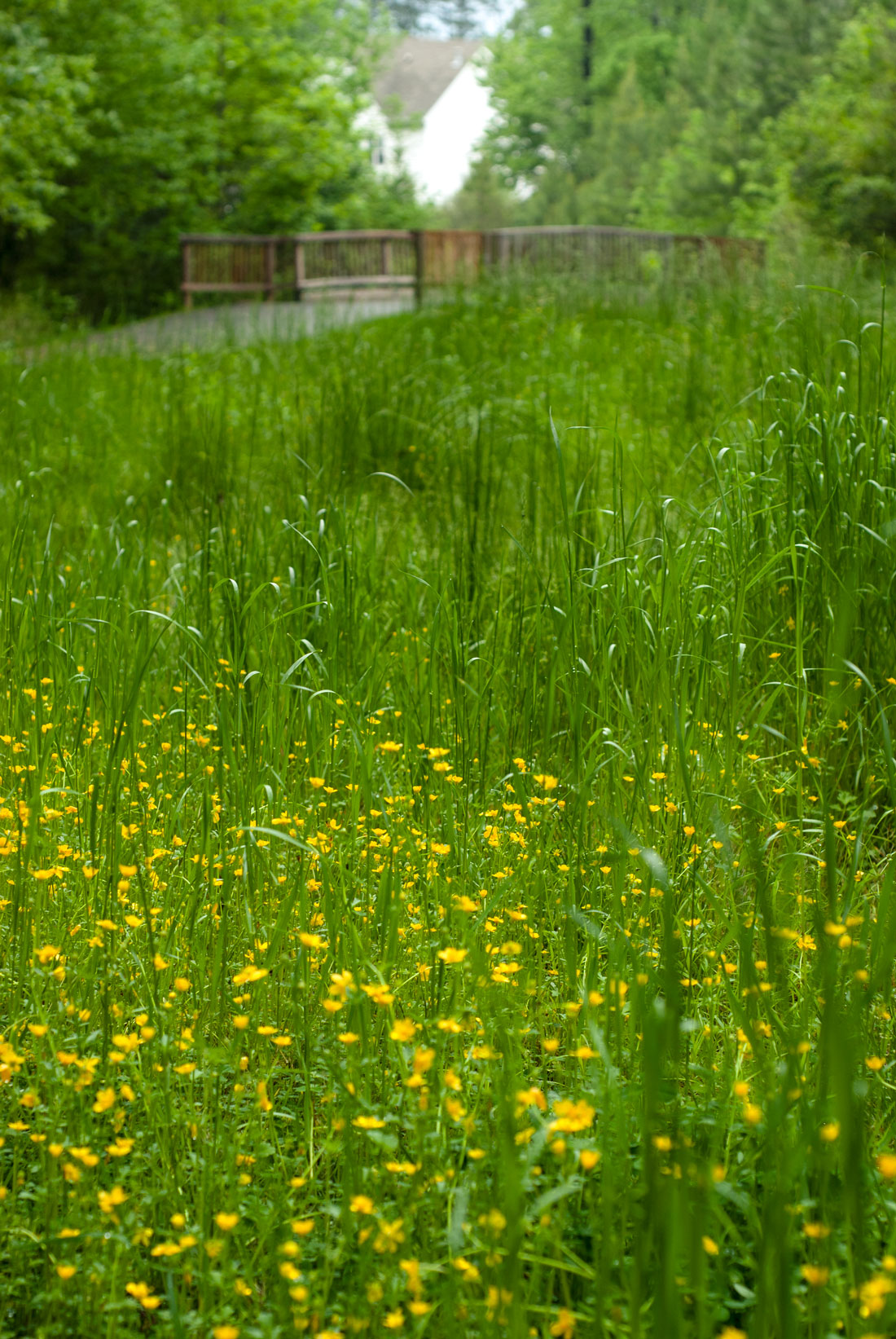
This nature trail was built in low-lying wetlands on a flood plain. In the background, an elevated bridge over the wetlands connects the nature trail to dry ground.
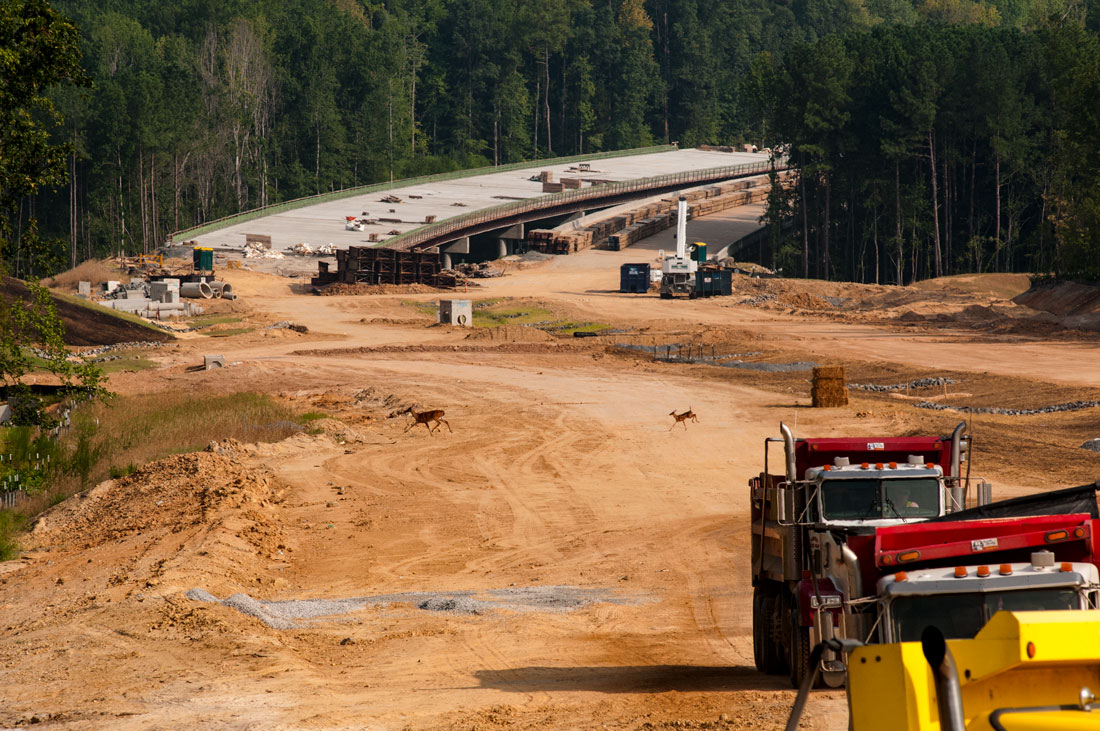
A major road crossing the nature trail temporarily disrupted the migration corridor for deer that live along the trail. However, an overpass was built over the nature trail that preserved the corridor in the long run, below. The overpass wasn't an extra expense, because the area was a flood plain that the road had to be elevated over anyway.
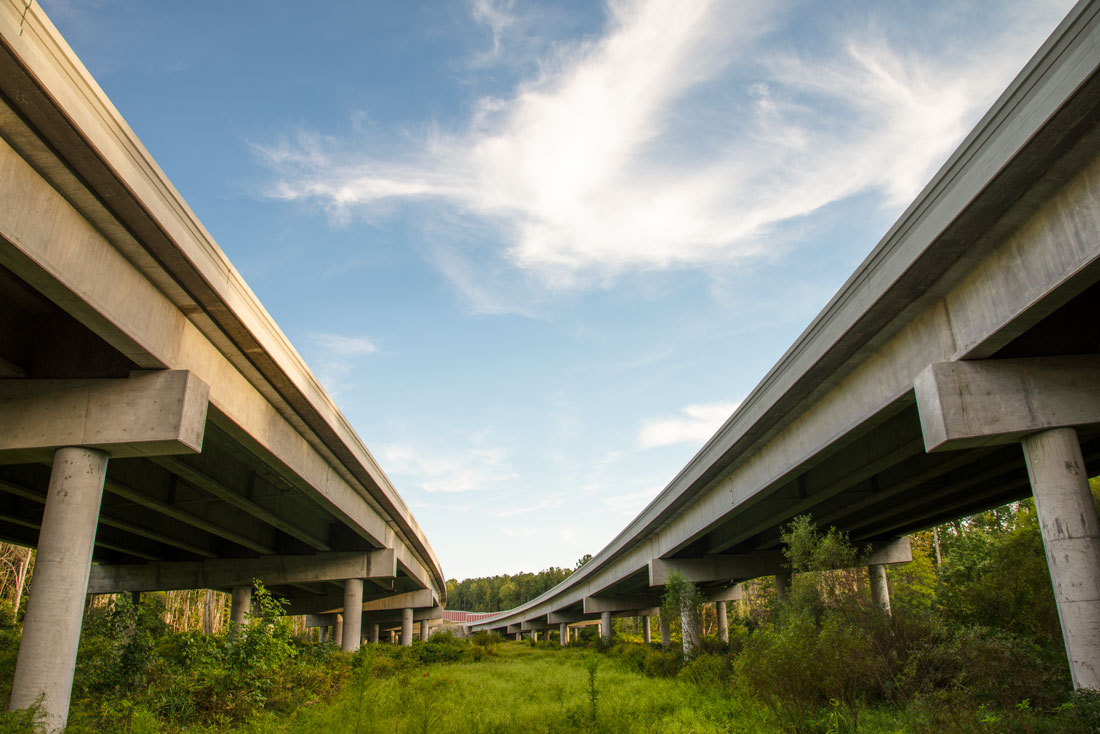
Many building codes prohibit building in floodplains, so these spaces are natural ones to create corridors for people and wildlife. Cities have even created wetlands and gardens in some places to control stormwater. One of the most famous is the Portland Japanese Garden, which is also a world-class tourist draw and revenue generator as well as an advertisement for the Oregon plant industry.
In Richmond, California, a rails-to-trails project connects to community gardens that urban residents can use to grow their own food.
Converting Unused Spaces to Green Space
Rails-to-trails projects are among the most well known reuse of spaces. The Bloomingdale Trail in Chicago replaced an old railroad track with an elevated garden and walking, jogging and roller blading trail. New York City’s High Line in the Chelsea neighborhood, another rails-to-trails project, was so successful it created another problem – skyrocketing housing prices in the area. Miami has created a trail called the Underline that goes beneath the Metrorail. Trails have helped convert former manufacturing zones into green, pedestrian-friendly communities with pleasant paths along rivers and parks.
Integrating Green and Gray Spaces
The best trails connect affluent and less-affluent neighborhoods, performance spaces, playgrounds, local business plazas and classrooms for environmental education that are adapted to a community’s overall needs so that the trails are an integrated part of a community’s services.
Cleaning Up Toxic Environments
Newark, New Jersey, has a boardwalk along the Passaic River that connects parks and exercise classes in an area once contaminated by toxic chemical dumps. Other communities have cleaned up similar contamination and put nature preserve and trails in their place.
Telling History
Asheville, North Carolina, has what is called the Urban Trail, which has 30 sculptural trail stations that highlight historical figures and events.
Stimulating the Economy and Local Tourism
More than 750 neighborhoods across the United States have been revitalized by creating places for people to walk, Ellen Dunhum-Jones, co-author of Retrofitting Suburbia, has said.
A National Park Service study found that trails in California, Iowa and Florida brought millions of tourist dollars into local economies. The Whitefish Trail in Whitefish, Montana, contributes $6.4 million in annual spending by visitors who use the trail and purchase or rent outdoor gear. The spending enables the community to pay for 68 jobs. The Ghost Town Trail in southwest Pennsylvania serves some 75,000 users annually and brings an estimated $1.7 million dollars into the local economy.
A network of trails in France, Belgium, the Netherlands and Spain called the Grand Randonée is a popular tourist draw, as ia the Via Alpina which supports sustainable development in remote mountain areas and promotes Alpine cultures and cultural exchanges.
Important Factors for Successful Trail Systems
The majority of trails are ones that have long existed and have been enhanced or connected to other trails. Making a new trail is complex. Bridges or boardwalks have to be built over streams, rivers, and wetlands. Trail gradients, drainage patterns, vegetation types, average precipitation and storms have to be considered. Trails on steep slopes may require switchbacks. Drainage points need to be built on trails to prevent them from eroding. Trails need signage to avoid people taking a wrong turn or colliding with others at intersecting trails.
The process of building trails usually begins with a map and inventory of existing public and private spaces. Planners have to consider the preservation of natural habitat, enhancing and restoration of natural resources, water quality, and connecting a trail with parks, recreational facilities and transit points to meet residents’ needs.
Safety and maintenance are crucial to the success of an urban trail system. In Anchorage, Alaska, a citizen volunteer program called Trail Watch patrols and monitors trails.
Trail systems include strategies to prioritize hiring local residents for construction and park jobs, provide maintenance and provide programs to economically develop communities around trails while not pricing out low-income residents for housing. The Atlanta Beltline, a rails-to-trails project that also includes seven miles of remediated brownfields, connects nearly a fourth of Atlanta, Georgia’s population either directly or through new transit lines. It tries to preserve affordable housing and offer new units through developer incentives and land acquisition. It is being seen as a large social experiment to unify the city, not just a nature trail.
One of the problems of urban trails is that they tend to be used much more by whites who have a high annual income and more formal education than other socio-economic groups. This is surprising, because studies show that low-income populations have closer access to trails than their high-income counterparts. This has raised questions about how to increase the use of trails by non-white and lower-income residents. Studies indicate that some ethnic groups are less likely to use green spaces because they feel less safe on them or prefer other activities such as sports events, church, shopping and social events. Latinos and Asians have indicated in surveys that they are more likely to visit nature-based spaces with large groups of family and friends, which would favor parks. This indicates that culture should play a part in trail design and activities.
COVID has added a whole new dimension to nature trails. People want to be outdoors and use open outdoor areas to keep physically and mentally healthy and provide activities for children who are not going to school and can’t hang out with friends. A proven way to reduce transmission of the disease – physical distancing and refraining from being in enclosed spaces with other people – has resulted in a surge in public use of trails and other outdoor areas.
Here are some guidelines to use nature trails more safely:
- Don’t use a nature trail if you have symptoms of COVID, have tested positive, or have been exposed within two weeks to someone who has COVID-19.
- Wash your hands before and after using a nature trail.
- Maintain a six-foot distance from other people on a nature trail at all times. If you can’t do so because of people passing, wear a mask.
- Warn other trail users of your presence and allow proper distance as you pass them. Step off trails to allow them to pass if necessary to keep minimum recommended distances at all times.
- Keep your dog on a leash and six feet away from other people. Dogs can transmit the virus on their hair, although they don’t normally get the virus itself.
- Avoid using public restrooms on trails.
- Bring your own water and don’t use public drinking fountains.
- Don’t leave trash. Carry it home to help protect park workers from possible virus transmission.
- Avoid hiking with people who don’t live in your household. The risk of contracting COVID-19 outdoors is lower, but only if you don’t engage in lengthy conversations with non-household members and if you wear a face mask and physically distance.
- The virus can live on steel playground equipment for up to 48 hours and longer on plastic and it is not possible to sterilize a whole playground, so it’s wiser not to allow children to use such equipment.
- Use trails close to home. The further you get from home, the more likely you will have to use public restrooms, gas stations, food outlets and hotels that will place you in contact with surfaces that others have touched.
- Many national parks and trails are crowded and overwhelmed with visitors, making physical distancing difficult or impossible. If you go to one or on a trail where you can’t physically distance, leave.
- Use trails at times when they aren’t crowded.
- Avoid risky hikes where you could get injured to avoid emergency medical workers being diverted to rescue you and the possibility that you may need hospital care during this time.
- Make an effort to get outside to do physical activity, as it may help your body if you do get the virus. Exercise can protect you against poor cardiovascular health, obesity, hypertension and diabetes, all of which are risk factors for COVID-19. Exercise also can help relieve stress and depression.
- Always use your own sports equipment.
- Research any route you are riding or walking on for the first time as well as alternate routes so you can change course if the first one is too crowded or is closed because of COVID.
Check out these related items
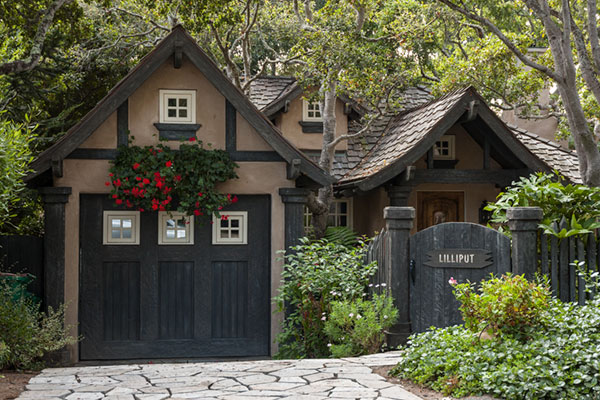
Why Isn’t Every Town Like Carmel?
Carmel, California, demonstrates how design, planning and environmentalism can enhance a small town.
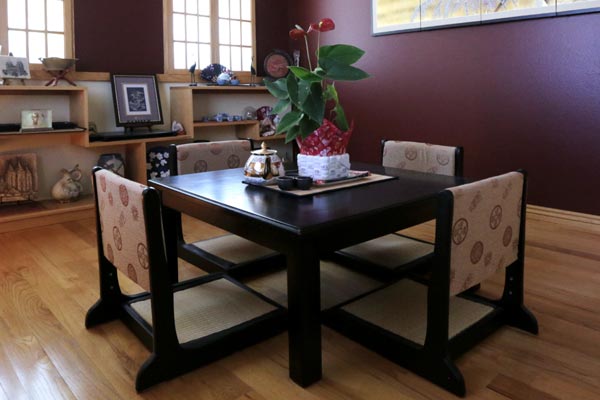
Private Paradises Amid Adversity
Sheltering at home has been accompanied by an outpouring of creativity that can help us cope with adversity and shape our future.

Home is Where the Vacation is
Vacationing at home looks to be the main travel trend for the near future. Here are some ways to enjoy it.
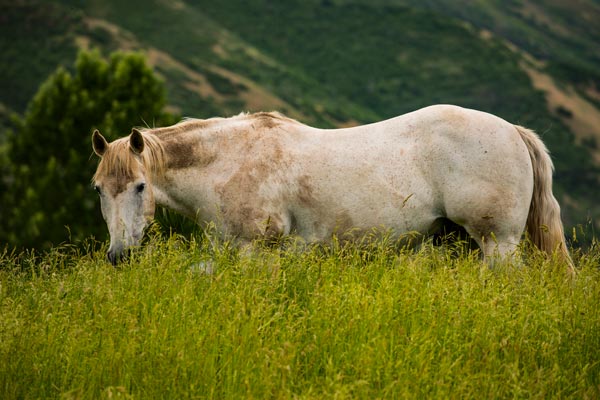
Home is a Destination, Too
Need a five-minute stress reliever while sheltering at home? See these photos of my beautiful mountain village of Mapleton, Utah.
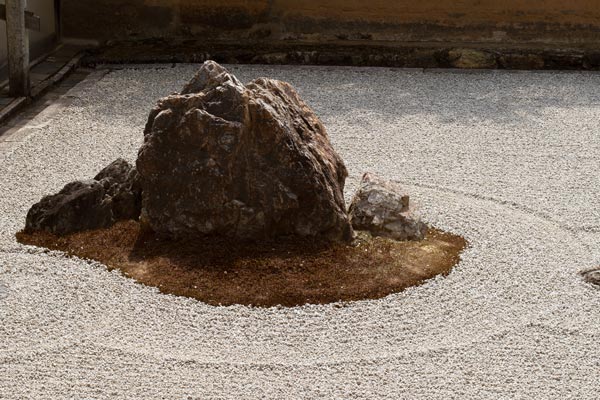
Meditation and Japan’s Rock Garden
Meditation is the theme of the Ryoanji dry rock garden. Find out why the garden inspires meditation and how to meditate.

Elements of a Japanese Garden
Imagine you're sitting in Los Angeles traffic on a hot day. Take a break and head for a cool green oasis - Suihoen Japanese Garden
